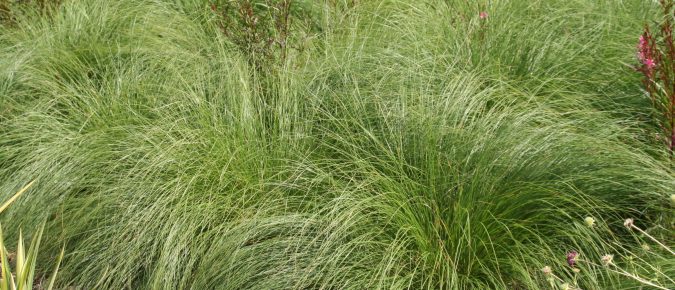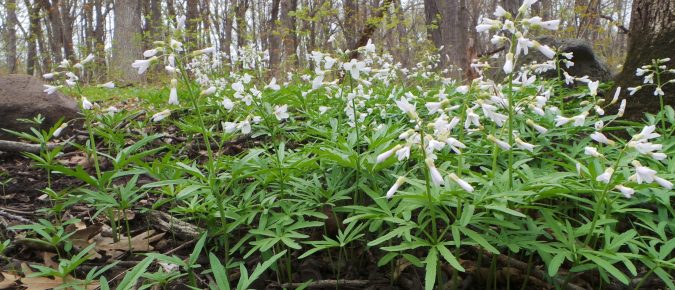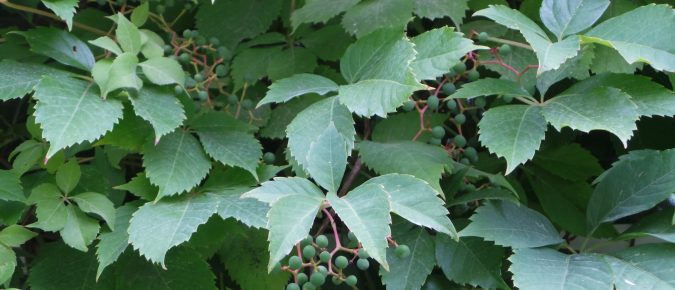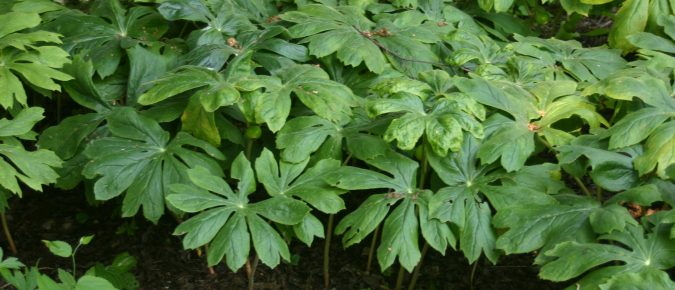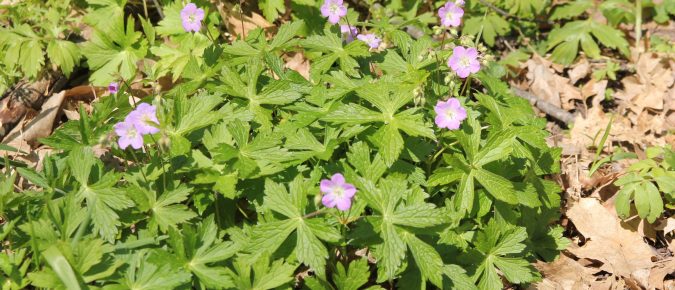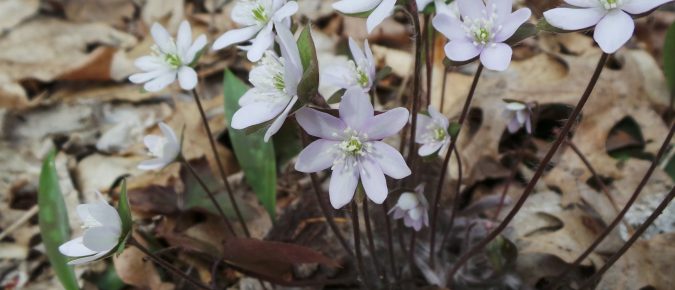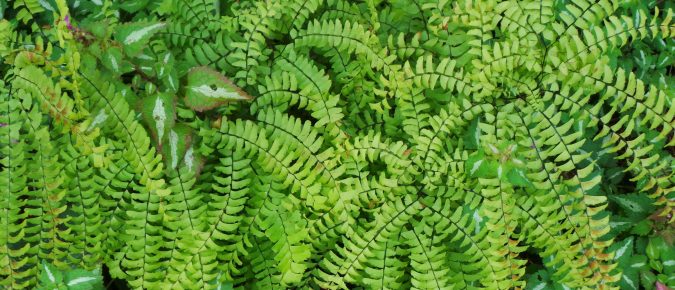One of the showiest prairie grasses, prairie dropseed (Sporobolus heterolepis) is frequently cultivated as an ornamental for its attractive fountain of fine textured, emerald-green leaves, delicate flower and seed heads, and colorful fall color. Learn more about this native ornamental grass that is a great addition to many landscapes in this article.
With finely cut foliage that remains attractive through the growing season and conspicuous fruit which provide ornamental interest into the fall, red baneberry and white baneberry are two similar woodland plants that can be great additions to shady gardens. These species do have poisonous fruit, so need to be used with caution. Learn more about these native perennials …
With attractive flowers and foliage, Virginia waterleaf is an herbaceous perennial of moist deciduous forests that blooms a little later than most spring-blooming wildflowers in woodlands. The common name comes from the variable markings on the leaves which resemble water spots. Learn more about this native plant in this article…
Cutleaf toothwort is one several woodland plants that are harbingers of spring with their early flowers. Although small, this charming spring ephemeral is eye-catching with its distinctive leaves and soft white flowers. Easy to grow, it’s a great addition to any woodland garden, or to just appreciate the colonies that fill many natural areas. Learn more about this native species by reading this article…
Skunk cabbage is one of the first plants to bloom in the spring, with odd flowers like something from a science-fiction movie. The plant can bloom when there is still snow on the ground. The bizarre flowers are followed by huge rosettes of broad leaves that disappear by summer. Read this article to learn more about this interesting native plant…
You’ve probably seen spherical swellings on goldenrod stems at one time or another, but do you know what caused those? A type of small fly with patterned wings is responsible for the most common gall on goldenrods. To learn more about the goldenrod gall fly and how it creates those golf ball-sized growths, read this article…
This time of year the leaves of Virginia creeper turn from an average green to a brilliant crimson red, painting tree trunks and the ground on woodland edges with bright color once temperatures cool. Learn more about this vigorous native vine that adapts to many different conditions and soils in this article…
Mayapple is a native wildflower with distinctive, deeply lobed, umbrella-shaped leaves. It forms dense colonies in open deciduous woodlands and other shaded sites and makes a wonderful groundcover for a woodland garden or naturalized setting. More details about this unique herbaceous perennial, along with general care, are found in this article.
Geranium maculatum is a pretty flowering plant native to eastern North America. In addition to filling natural woodland openings, this herbaceous perennial works well in informal gardens as well, offering loose clusters of pink flowers in late spring to early summer. Learn more about wild geranium in this article…
Spring is heralded in Wisconsin woodlands by a number of wildflowers. One of the earliest of these is Hepatica, with delicate, starry flowers in a range of colors from white to purple. Learn more about these native plants in the buttercup family, whose tri-lobed leaves were once thought to have medicinal properties, by reading this article…
Looking for a native plant with winter interest? Rattlesnake master is an herbaceous perennial from the prairies whose unusual golf ball-like flowers heads are rather sculptural. Although at home in native gardens, it also works well as an accent in the perennial border. To learn more about this plant, read this article…
With finely cut foliage, northern maidenhair fern is an attractive addition to shade gardens with rich moist soil. Adiantum pedatum is just one of many maidenhair ferns, although the only one hardy in our area. It has distinctive, fine-textured fronds on dark-colored stems up to 2 feet tall. Learn more about this native species in this article…

